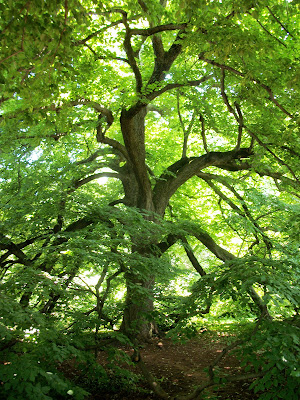The Foodie Girls Visit Monticello
As we continued our journey eastward, we stopped in Charlottesville, Virginia so that we could visit Monticello, the home of Thomas Jefferson.
Thomas Jefferson was not only the writer of the Declaration of Independence (he liked to take all the credit for that piece of work), he was also a statesman, our third US president, a plants man, and a keen observer of nature. Beyond that, Jefferson was also a self-taught architect and Monticello was his crowning achievement.
The front of the house. This is not the elevation that is most famous, however.
A compass is embedded in the ceiling of the front porch and a clock that has faces both on the inside and outside sits above the main doors to the house.
Unfortunately, photography is not permitted inside the house as some items are only on loan and Monticello does not have photographic rights to those items.
The tour was fascinating and we learned a great deal about how the man's mind worked and about what things were most important to him.
Once back outside, we were free to take all the photos we desired.
Mulberry Row sits above the vast vegetable garden. This was the center of plantation activity during Jefferson's lifetime. Here the slaves, indentured servants, and free men lived and worked.
Jefferson wanted Monticello to be entirely self-sufficient, with his people making and growing everything that was needed for the plantation. While he never realized that lofty dream, they worked hard to live off the land.
Looking towards one end of the vast vegetable garden.
And towards the other end.
Jefferson was always experimenting with new varieties and new plants; trying to see what would grow well in his part of the world.
The Garden Pavilion, where Jefferson liked to sit and read or write.
The Levy Gravesite sits in Mullberry Row.
Uriah Phillips Levy was the first Jewish commodore in the United States Navy and he purchased Monticello after Thomas Jefferson's death. It was due to the Levy family's efforts that Monticello has been saved so that we may enjoy this UNESCO World Heritage Site.
The joinery chimney is all that remains of the joinery.
A huge peony in bloom.
Looking down the north Flower Walk.
Peonies and poppies.
Another variety of peony.
Cicada on phlox.
This is a member of the Brood 2 cicadas.
The kitchen sits under the hill below the house.
The "stove."
A beautiful tree near the front walk to the house.
Thomas Jefferson is buried in the family plot on the property.
The epitaph for his tombstone contains only the things that Jefferson considered to be his important contributions in life:
"Author of the Declaration of American Independence,
of the Statute of Virginia for Religious Freedom,
and Father of the University of Virginia."
If you are ever near Charlottesville, Virginia, you must make the effort to visit Monticello.







































2 comments:
Lovely pictures.
But no souvenirs?
I brought back purloined hyacinth bean vine seeds and Mr. Hawthorne came back with Mr. Jefferson's nut, which you have seen.
Beautiful pictures, Marilyn. I love Monticello. My husband would tell you that Thomas Jefferson was also the first US President to attend college and an alumnus of the College of William & Mary -- also my husband's alma mater.
Looks like you enjoyed your trip!
Post a Comment